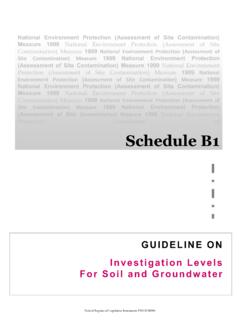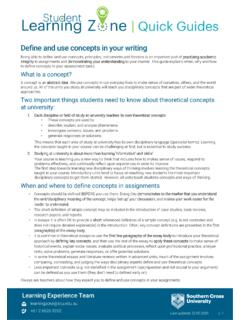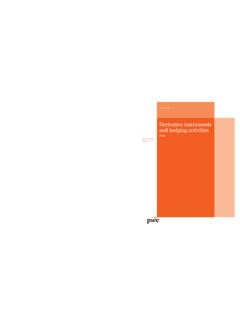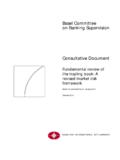Transcription of Connecting your ideas: Linking words
1 +61 2 6626 9262 Last updated: p. 1 Learning Experience Team Connecting your ideas : Linking words What are Linking words and what are they for? Cohesion and clarity are essential elements of academic writing. Making the connections between your ideas clear and visible can help achieve clear communication as it will be much easier for the person reading to follow what you are saying and understand your argument or premise. In order to make connections clear, you can use Linking words between parts of a sentence, between sentences or between paragraphs. Looking for the right Linking word prompts you to think about how you are trying to connect your ideas and whether the connections make sense. Kinds of Linking words Let s explore Linking words by looking at two short sentences that could be connected through appropriate Linking words : This theory could be applied to many contexts. The theory is most useful when analysing practical situations. We can connect these sentences in a number of ways by using Linking words to show specifically what kind of connection we are making.
2 Here are some examples of how we can make them into one sentence in a variety of ways: This theory could be applied to many contexts, however / although it is most useful when analysing practical situations. This theory could be applied to many contexts because it is most useful when analysing practical situations. This theory could be applied to many contexts, particularly when analysing practical situations. We can also link these ideas but keep them as two connected sentences by using appropriate Linking language: This theory could be applied to many contexts. However, it is most useful when analysing practical situations because .. This theory could be applied to many contexts. In particular, it is most useful when analysing practical situations. This theory could be applied to many contexts. Despite this, it is most useful when analysing practical situations. All of these examples have the same two ideas , but the links or connections between the ideas add subtle differences to the meaning in each case.
3 There are four main categories of connective devices used extensively in academic writing: Adding information: and, furthermore, in addition, also Chronology: previously, subsequently, firstly Cause and effect: if, therefore, thus, consequently Compare and contrast: similarly, in contrast, however p. 2 GENERAL NOTES CONNECTIVES OR Linking DEVICES: Avoid over-using Linking words and phrases. It is not necessary to begin every sentence with a Linking device. This can make your writing seem mechanical or formulaic. If you think you are over-using Linking devices, take them out and read the sentence / paragraph / section without them. Do your ideas still hold together effectively? Is your message clear without overt connective devices? Avoid using the same Linking word or phrase repeatedly throughout your writing. However and furthermore are commonly over-used Linking words by many students. Try to use a variety of connective language in your academic writing.
4 Typical Linking words Type of link Within a sentence Between sentences or paragraphs Hints, tips and examples Adding similar information and, also, another, too In addition, moreover, furthermore, further, likewise, additionally, another, indeed, what is more Never use and at the start of a sentence. Showing comparison and contrast but, like, similarly, equally, whereas, however, although, though, while, compared with, is comparable to, unlike, yet, instead, still, notwithstanding, nonetheless, nevertheless, albeit While, however, in contrast, by contrast, on the other hand, alternatively, compared with, correspondingly, similarly, unlike, nonetheless, nevertheless, on the contrary, conversely Never use but at the start of a sentence. When using a contrasting or comparing Linking device to start a sentence, follow it with a comma (However, .. Similarly, .. On the other hand, ..). Showing cause and effect/ consequence so, because, if, thus, hence, therefore, consequently, may cause, can lead to, can result in, owing to, as a result of, as a consequence of, thereby, accordingly, otherwise, in that, in view of Despite this, even so, as a result, for this reason, with this in mind, thus, therefore, accordingly, consequently, as a consequence, as a result, owing to, that being the case, in that case, in view of Commas are generally used after these Linking devices when they introduce a sentence (Therefore.)
5 Despite this, ..). Showing condition if, even then, even if, unless, after, once, until, whether, yet, provided, providing, since, when, on the condition that, whenever, wherever As a result of, provided, providing, if, once, even then, even if, when, whenever, wherever Chronology then, when, after, before, while, first, second, third, next, later, latter, former, finally First, second, .. firstly, secondly, .. initially, to begin, at first, first of all, next, before, subsequently, previously, eventually, after, then, finally, to conclude, lastly, in summary, in short, to sum up, overall, in conclusion, in sum Use ordinal sequencing devices sparingly in your writing. Find other ways to sequence ideas rather than repeatedly using firstly, .. secondly, .. thirdly, .. p. 3 Providing examples such as, for instance, for example, including, evidenced by, exemplified by, illustrated by, demonstrated by, by way of example, notably An example of this, for example, for instance, this is evidenced / demonstrated / illustrated by, a case in point, to illustrate, to demonstrate, notably When introducing a long or complex list of examples, use a colon to introduce the list and semi-colons between the items in the list (.
6 Including: W; X; Y; and Z). Referring to regarding, considering, with regard to, with respect to, specifically, namely Regarding, in terms of, in the case of, as regards, with regard to, with respect to, on the question of, on the subject of Cautious, tentative academic language may, might, could, likely, probably, probable, possibly, possible, suggest, appear to, almost certain, may be due to, could be attributed to, cannot be ruled out, often, generally, usually, frequently, most, almost all, the majority of, certain types of, tends to It is thought that, it is believed, a widely held view is, it has been suggested, it may be, it is likely, it is probable, it is possible, there is some evidence to suggest, a likely / possible / probable explanation, in general, in general terms It is important in academic writing to avoid expressing absolute certainty. hedging devices or modal expressions are used to reduce the strength of a statement or claim to allow for exceptions and to avoid over-generalising.
7









